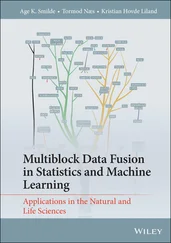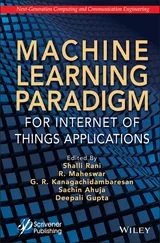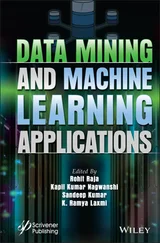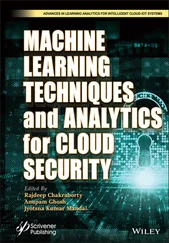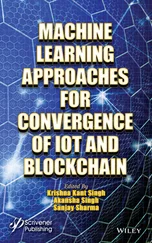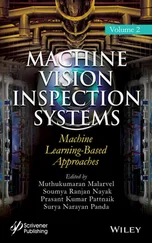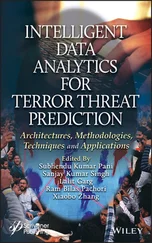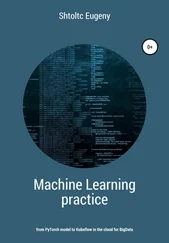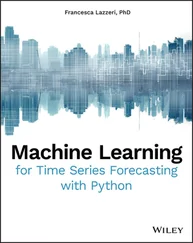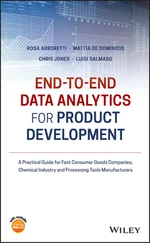1 Cover
2 Title page
3 Copyright
4 Preface
5 Acknowledgment
6 1 Machine Learning–Based Data Analysis 1.1 Introduction 1.2 Machine Learning for the Internet of Things Using Data Analysis 1.3 Machine Learning Applied to Data Analysis 1.4 Practical Issues in Machine Learning 1.5 Data Acquisition 1.6 Understanding the Data Formats Used in Data Analysis Applications 1.7 Data Cleaning 1.8 Data Visualization 1.9 Understanding the Data Analysis Problem-Solving Approach 1.10 Visualizing Data to Enhance Understanding and Using Neural Networks in Data Analysis 1.11 Statistical Data Analysis Techniques 1.12 Text Analysis and Visual and Audio Analysis 1.13 Mathematical and Parallel Techniques for Data Analysis 1.14 Conclusion References
7 2 Machine Learning for Cyber-Immune IoT Applications 2.1 Introduction 2.2 Some Associated Impactful Terms 2.3 Cloud Rationality Representation 2.4 Integration of IoT With Cloud 2.5 The Concepts That Rules Over 2.6 Related Work 2.7 Methodology 2.8 Discussions and Implications 2.9 Conclusion References
8 3 Employing Machine Learning Approaches for Predictive Data Analytics in Retail Industry 3.1 Introduction 3.2 Related Work 3.3 Predictive Data Analytics in Retail 3.4 Proposed Model 3.5 Conclusion and Future Scope References
9 4 Emerging Cloud Computing Trends for Business Transformation 4.1 Introduction 4.2 History of Cloud Computing 4.3 Core Attributes of Cloud Computing 4.4 Cloud Computing Models 4.5 Core Components of Cloud Computing Architecture: Hardware and Software 4.6 Factors Need to Consider for Cloud Adoption 4.7 Transforming Business Through Cloud 4.8 Key Emerging Trends in Cloud Computing 4.9 Case Study: Moving Data Warehouse to Cloud Boosts Performance for Johnson & Johnson 4.10 Conclusion References
10 5 Security of Sensitive Data in Cloud Computing 5.1 Introduction 5.2 Data in Cloud 5.3 Security Challenges in Cloud Computing for Data 5.4 Cross-Cutting Issues Related to Network in Cloud 5.5 Protection of Data 5.6 Tighter IAM Controls 5.7 Conclusion and Future Scope References
11 6 Cloud Cryptography for Cloud Data Analytics in IoT 6.1 Introduction 6.2 Cloud Computing Software Security Fundamentals 6.3 Security Management 6.4 Cryptography Algorithms 6.5 Secure Communications 6.6 Identity Management and Access Control 6.7 Autonomic Security 6.8 Conclusion References
12 7 Issues and Challenges of Classical Cryptography in Cloud Computing 7.1 Introduction 7.2 Cryptography 7.3 Security in Cloud Computing 7.4 Classical Cryptography for Cloud Computing 7.5 Homomorphic Cryptosystem 7.6 Implementation 7.7 Conclusion and Future Scope References
13 8 Cloud-Based Data Analytics for Monitoring Smart Environments 8.1 Introduction 8.2 Environmental Monitoring for Smart Buildings 8.3 Smart Health 8.4 Digital Network 5G and Broadband Networks 8.5 Emergent Smart Cities Communication Networks 8.6 Smart City IoT Platforms Analysis System 8.7 Smart Management of Car Parking in Smart Cities 8.8 Smart City Systems and Services Securing: A Risk-Based Analytical Approach 8.9 Virtual Integrated Storage System 8.10 Convolutional Neural Network (CNN) 8.11 Challenges and Issues 8.12 Future Trends and Research Directions in Big Data Platforms for the Internet of Things 8.13 Case Study 8.14 Conclusion References
14 9 Performance Metrics for Comparison of Heuristics Task Scheduling Algorithms in Cloud Computing Platform 9.1 Introduction 9.2 Workflow Model 9.3 System Computing Model 9.4 Major Objective of Scheduling 9.5 Task Computational Attributes for Scheduling 9.6 Performance Metrics 9.7 Heuristic Task Scheduling Algorithms 9.8 Performance Analysis and Results 9.9 Conclusion References
15 10 Smart Environment Monitoring Models Using Cloud-Based Data Analytics: A Comprehensive Study 10.1 Introduction 10.2 Background and Motivation 10.3 Conclusion References
16 11 Advancement of Machine Learning and Cloud Computing in the Field of Smart Health Care 11.1 Introduction 11.2 Survey on Architectural WBAN 11.3 Suggested Strategies 11.4 CNN-Based Image Segmentation (UNet Model) 11.5 Emerging Trends in IoT Healthcare 11.6 Tier Health IoT Model 11.7 Role of IoT in Big Data Analytics 11.8 Tier Wireless Body Area Network Architecture 11.9 Conclusion References
17 12 Study on Green Cloud Computing—A Review 12.1 Introduction 12.2 Cloud Computing 12.3 Features of Cloud Computing 12.4 Green Computing 12.5 Green Cloud Computing 12.6 Models of Cloud Computing 12.7 Models of Cloud Services 12.8 Cloud Deployment Models 12.9 Green Cloud Architecture 12.10 Cloud Service Providers 12.11 Features of Green Cloud Computing 12.12 Advantages of Green Cloud Computing 12.13 Limitations of Green Cloud Computing 12.14 Cloud and Sustainability Environmental 12.15 Statistics Related to Cloud Data Centers 12.16 The Impact of Data Centers on Environment 12.17 Virtualization Technologies 12.18 Literature Review 12.19 The Main Objective 12.20 Research Gap 12.21 Research Methodology 12.22 Conclusion and Suggestions 12.23 Scope for Further Research References
18 13 Intelligent Reclamation of Plantae Affliction Disease 13.1 Introduction 13.2 Existing System 13.3 Proposed System 13.4 Objectives of the Concept 13.5 Operational Requirements 13.6 Non-Operational Requirements 13.7 Depiction Design Description 13.8 System Architecture 13.9 Design Diagrams 13.10 Comparison and Screenshot 13.11 Conclusion References
19 14 Prediction of the Stock Market Using Machine Learning–Based Data Analytics 14.1 Introduction of Stock Market 14.2 Related Works 14.3 Financial Prediction Systems Framework 14.4 Implementation and Discussion of Result 14.5 Conclusion References Web Citations
20 15 Pehchaan: Analysis of the ‘Aadhar Dataset’ to Facilitate a Smooth and Efficient Conduct of the Upcoming NPR 15.1 Introduction 15.2 Basic Concepts 15.3 Study of Literature Survey and Technology 15.4 Proposed Model 15.5 Implementation and Results 15.6 Conclusion References
21 16 Deep Learning Approach for Resource Optimization in Blockchain, Cellular Networks, and IoT: Open Challenges and Current Solutions 16.1 Introduction 16.2 Background 16.3 Deep Learning for Resource Management in Blockchain, Cellular, and IoT Networks 16.4 Future Research Challenges 16.5 Conclusion and Discussion References
22 17 Unsupervised Learning in Accordance With New Aspects of Artificial Intelligence 17.1 Introduction 17.2 Applications of Machine Learning in Data Management Possibilities 17.3 Solutions to Improve Unsupervised Learning Using Machine Learning 17.4 Open Source Platform for Cutting Edge Unsupervised Machine Learning 17.5 Applications of Unsupervised Learning 17.6 Applications Using Machine Learning Algos References
23 18 Predictive Modeling of Anthropomorphic Gamifying Blockchain-Enabled Transitional Healthcare System 18.1 Introduction 18.2 Gamification in Transitional Healthcare: A New Model 18.3 Existing Related Work 18.4 The Framework 18.5 Implementation 18.6 Conclusion References
24 Index
25 End User License Agreement
1 Cover
2 Table of Contents
3 Title page
4 Copyright
5 Preface
6 Acknowledgment
7 Begin Reading
8 Index
9 End User License Agreement
1 Chapter 1 Figure 1.1 Data analysis process. Figure 1.2 Fog computing and edge computing. Figure 1.3 Machine learning algorithms. Figure 1.4 Issues of machine learning over IoT applications.
2 Chapter 2 Figure 2.1 The cloud. Figure 2.2 Cloud computing. Figure 2.3 Integration of cloud computing and IoT. Figure 2.4 Supervised learning. Figure 2.5 Unsupervised learning.
3 Chapter 3 Figure 3.1 Classification of big data analytics. Figure 3.2 Illustration of major functions of predictive data analytics. Figure 3.3 General framework of proposed model for predictive data analytics. Figure 3.4 Pearson’s correlation among various attributes of dataset. Figure 3.5 Histogram plot for the frequency of customers in country level (India... Figure 3.6 Histogram plot for the customers’ frequency at city level in Maharash... Figure 3.7 Histogram plot for Mumbai along the product dimension. Figure 3.8 Box plot for products across consumer segment. Figure 3.9 Pivot table. Figure 3.10 Heatmap of the world.
Читать дальше


